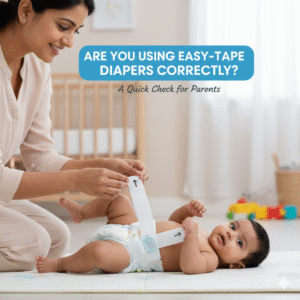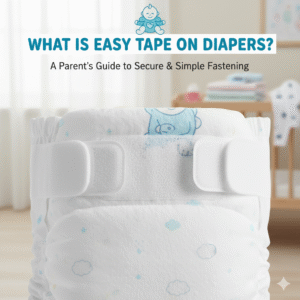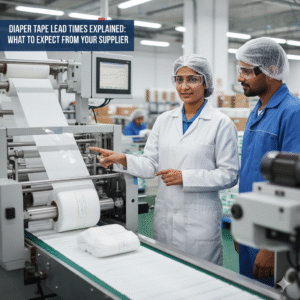Sap Paper for Sanitary Napkins: The Sustainable Future of Feminine Hygiene
Introduction: Rethinking Period Care with Sap Paper
Let’s face it – traditional sanitary napkins aren’t exactly the planet’s best friend. Loaded with plastics and chemicals, they contribute to landfills and environmental pollution. But what if there was a more sustainable solution, one that’s gentle on both our bodies and the environment? Enter sap paper for sanitary napkins.
This innovative material is rapidly changing the landscape of feminine hygiene, offering a biodegradable and hypoallergenic alternative to conventional pads. In this comprehensive guide, we’ll delve into the world of sap paper sanitary pads, exploring their benefits, manufacturing process, and why they’re the future of period care.
What is Sap Paper and How is it Used in Sanitary Napkins?
Sap paper, also known as sap sheet, is a natural, biodegradable material derived from the sap of trees like pine and spruce. This sticky resin, a byproduct of the paper industry, is traditionally considered waste. However, innovative manufacturers have found a way to transform it into a valuable resource.
But how does sap paper end up in your biodegradable sanitary pads? Here’s how:
- Extraction and Processing: The sap, a sticky resin, is collected as a byproduct of the papermaking process.
- Drying and Transformation: This sap is then dried and processed into thin, flexible sheets – this is your sap paper.
- Layering for Absorption: In sap paper sanitary pads, this sheet becomes a crucial layer, providing excellent absorption and fluid retention.
Understanding Other Key Materials in Sanitary Napkins
While sap paper is a game-changer, it’s essential to understand the other components that go into making a sanitary pad, sustainable or otherwise.
- Airlaid Paper: This incredibly absorbent material forms the core of many pads, including those made with sap paper. It quickly wicks away moisture, keeping you dry and comfortable.
- Fluff Pulp: Derived from wood pulp, this material adds cushioning and further enhances the absorbency of the pad.
- Bioplastics (in some eco-friendly options): Unlike traditional plastics, bioplastics are derived from plant-based sources and are compostable, making them a more sustainable choice.
Why Choose Sap Paper Sanitary Pads? Unveiling the Benefits
The shift towards sustainable sanitary products is driven by a growing awareness of the environmental impact of traditional options. Here’s why sap paper sanitary napkins are leading the charge:
1. Biodegradability: A Gift to the Planet
- Traditional pads can take hundreds of years to decompose, languishing in landfills and releasing harmful pollutants.
- Sap paper sanitary pads, however, are biodegradable. This means they break down naturally in a compostable environment, leaving behind minimal waste.
2. Gentle on Sensitive Skin: Hypoallergenic and Safe
- Many women suffer from irritation and allergies caused by the chemicals and fragrances found in conventional pads.
- Sap paper, being naturally hypoallergenic, minimizes the risk of irritation, making it ideal for even the most sensitive skin.
3. Sustainable and Eco-Friendly: A Choice for the Conscious Consumer
- Choosing sap paper sanitary pads is a conscious step towards reducing your environmental footprint.
- By opting for biodegradable materials, you contribute to a healthier planet for everyone.
4. High Absorbency and Performance: No Compromise on Quality
- You might assume that eco-friendly means compromising on performance. Not with sap paper sanitary napkins.
- These pads are designed for optimal absorption, keeping you feeling dry and confident throughout your cycle.
How are Sap Paper Sanitary Pads Made?
The manufacturing process of sap paper sanitary pads reflects a commitment to sustainability and quality:
- Sourcing the Sap: The journey begins with ethically sourcing the sap, often as a byproduct from the paper industry.
- Creating the Sap Sheet: The collected sap undergoes a drying and processing procedure to transform it into thin, flexible sheets of sap paper.
- Assembling the Pad: These sheets are then layered with other biodegradable sanitary pad materials like airlaid paper and fluff pulp to create a comfortable and absorbent core.
- Quality Control and Packaging: Each pad undergoes rigorous quality checks to ensure hygiene and performance. Finally, they’re packaged using eco-friendly materials, minimizing waste.

Get Free Sample Kit Of Our Fabric At Your Door Step
- Online Order
- Door Delivery
- 1-Click Quotation
Exploring the Market: Where to Buy Sap Paper Sanitary Pads Online
Ready to make the switch? You’ll find a growing number of brands embracing the power of sap paper. Here’s what to look for:
- Certifications: Look for certifications like “biodegradable,” “compostable,” or “hypoallergenic” to ensure authenticity and quality.
- Brand Reputation: Research the brand’s commitment to sustainability and ethical sourcing practices.
- Customer Reviews: Reading reviews from other users can provide valuable insights into the product’s comfort, absorbency, and overall performance.
Best Sap Paper Sanitary Napkin Brands:
While the availability of specific brands might vary depending on your location, keep an eye out for brands championing sustainable practices and using sap paper in their products.
Pro Tip: When searching online, use specific keywords like “sap paper sanitary pads for sensitive skin” or “best sap paper sanitary napkin brands” to narrow down your search and find products tailored to your needs.
FAQs: Addressing Your Queries About Sap Paper Sanitary Pads
Are sap paper sanitary pads as absorbent as regular pads?
Absolutely! Sap paper is naturally absorbent and, when combined with other materials like airlaid paper, offers comparable or even superior absorbency to traditional pads.
Can I compost sap paper sanitary pads at home?
While sap paper is biodegradable, it’s essential to check the specific composting guidelines provided by the pad manufacturer. Some pads might require industrial composting facilities for complete breakdown.
Are sap paper sanitary pads more expensive?
The cost of eco-friendly period care products like sap paper pads might be slightly higher than conventional options. However, many women find the benefits of sustainability, comfort, and reduced environmental impact well worth the investment.
Conclusion: Embracing a Sustainable Future with Sap Paper
The shift towards biodegradable feminine hygiene products is more than just a trend – it’s a necessary step towards a healthier planet and a brighter future. Sap paper sanitary napkins stand at the forefront of this revolution, offering a compelling alternative that’s good for us and the environment.
By making informed choices about the products we use, we can contribute to a more sustainable and equitable world, one period at a time.
Contact Us
Have questions about sap paper and its role in sustainable hygiene solutions? We’re here to help!
Email: sale@favouritehub.com
WhatsApp: +91 95288811566






































We Do Business On Trust.Our Nonwoven fabric Business is Built on trust. Trust starts with Transparency.
Mr.Ramniwas Garg Founder Of Favourite Group